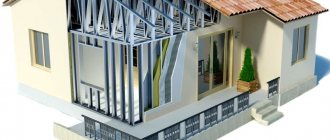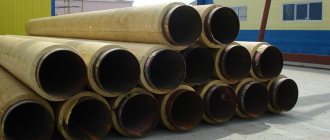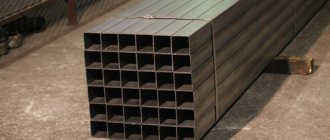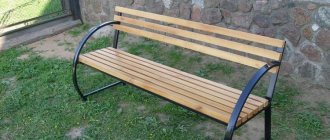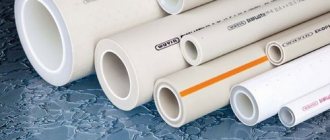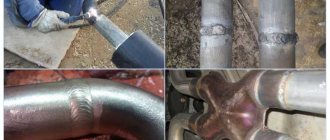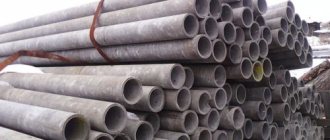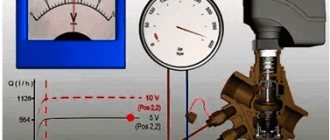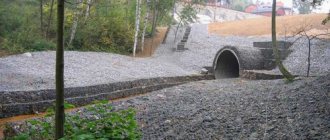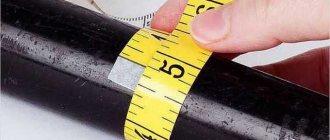Among all common rolled metal products, chrome-plated pipes are the most widely used. Due to their practicality, corrosion protection and aesthetics, the products are used in many commercial and household applications - from medical equipment to luxury office furniture. But before making a choice in favor of one variety or another, it is worth understanding the technology of their production and classification.
Chrome pipes are a practical and aesthetic basis for creating a wide variety of designs and structures
The difference between a chrome surface and rolled metal
A chrome-plated pipe visually differs from conventional metal products with a smooth polished surface and a typical “silver” shine. This layer not only performs decorative functions, but also protects against corrosion (rust).
Chrome plating is a special type of metalworking, and such workpieces are completely ready for use. They do not require painting, sanding or varnishing, since the smooth anti-corrosion coating of pipes, fittings and other products has unique properties.
Anti-corrosion protection is the process of enriching the surface of rolled metal with chromium compounds. In other words, it is the deposition of chromium on the outside of steel blanks through a chemical or electrolytic reaction.
Manufacturing materials
Cold-rolled furniture, thin-walled tubes are made from steel of various grades: 08Yu, 08, 2sp/ps, 1sp/ps. For stainless steel products, grades 12Х18Н10Т, 08Х12Н10, AISI304 are used. Such items are more expensive, but they last longer.
How to decoupage an old cabinet, an overview of popular techniques
Cold rolled pipes are of excellent quality. They can be subjected to galvanic treatment, galvanizing, powder painting, and chrome plating. Main methods of chrome plating:
- Diffuse - impregnation of the outer layer with chromium. The process takes place on specialized equipment as part of industrial manufacturing.
- Chemical - recreate the chrome layer using a saline solution.
- Electrolytic - immersion, then keeping the parts in a container with electrolyte (it can even be used at home, the main thing is to wear gloves and a mask).
The electrolytic option allows you to obtain surfaces with a variety of patterns. Milky chromium is achieved at temperatures from 60 to 80°C. This material bends easily without deforming the coating layer. Bright chrome plating is created at temperatures between 45 and 60°C. Such elements look beautiful in the interior and last a long time.
With hard chrome plating, a thick layer of chromium is applied to the material, which significantly increases strength. However, the mass of such items is quite large, so they are rarely used in furniture production.
Steel
Chrome plated
Characteristics of chrome pipes
Chrome-plated pipes have their own GOST, assortment and size table for diameter and length. The shape is not only round; a square or oval chrome-plated pipe is often used. Appearance – matte, shiny, colored pipes. Functionality - the frame or basis of various products (from pylons and bar counters to collapsible retail displays and medical beds). Chrome-plated products - not only pipes, but also all kinds of components for them (accessories and fittings). The main classification is by diameter (internal and external section, the difference determines the thickness and functionality of chrome-plated products).
Chrome pipes often decorate cars and motorcycles
Furniture pipes with a chrome-plated surface are available in diameters of 10, 16, 25, 32, 40 and 50 mm. From them they produce:
- hangers;
- railings for metal and bunk beds;
- legs and frames of tables, chairs, banquettes, armchairs and sofas;
- seats for waiting rooms at train stations, etc.
Accessories:
- fastenings for glass display cases and shelves;
- door handles;
- nodal supports, holders and brackets;
- corners for furniture based on plywood, wood and chipboard;
- fittings and couplings for connecting pipes (not only chrome-plated).
Features and purpose
Furniture pipe is a durable product with a long service life. It has a lot of varieties that differ from each other in their set of characteristics. It all depends on what area of the furniture industry it is used in. Can be made of metal, polypropylene, polyvinyl chloride. Furniture elements made from polypropylene pipes are very strong and durable. Constructions made of polyvinyl chloride are absolutely harmless and are widely used in interior decoration of premises of various types.
Furniture pipes are lightweight, which greatly facilitates installation work. The main advantages are easy connection, low cost, impressive appearance. When combining pipes with wood, glass, plastic, you get magnificent interior items:
- shelving for a room, garage, large pantry;
- benches;
- book and souvenir shelves;
- coffee tables with glass top;
- wine shelves;
- greenhouses;
- gazebos;
- flower racks.
The downside is a small selection of interior elements that are made from pipes. In addition, working with such materials requires concentration and accuracy. It will not be possible to quickly assemble the product - in a hurry it can be deformed. To bend parts, they require preheating.
Furniture pipes have a universal purpose. They are used in the installation of both complex and simple structures - it all depends on the thickness and material. For example, in the production of exhibition models, kitchen units, and decoration of retail premises, chrome-plated tubes are used.
Thin-walled products are used for decoration, lightweight structures that do not require special strength. They decorate facades and decorate interiors. Furniture made from PP pipes is not afraid of moisture, is plastic, easy to install, and is used everywhere, even outdoors, in courtyards, and on vacation. PVC pipes are used less frequently in the furniture industry. They are more used in sewer work. The products are inexpensive, but have a big drawback - they are afraid of strong heat.
Types of furniture painting, step-by-step decoration at home
Chrome plating technology
The production of chrome-plated pipes and fittings is carried out in three ways:
- Electrolytic (immersion of rolled metal into a tank with connection of electrodes).
- Chemical (precipitation of a layer of chromium compounds from solution).
- Diffuse (saturation of the surface of the product with active chromium electrons).
Depending on the organization of the process, a different structure of chrome coating can be obtained.
- Aesthetic shiny chrome plating with high wear resistance, for which 45°C – 60°C is sufficient.
- “Milk” chrome plating has low strength, but is suitable for bending products due to its ductility, which occurs within the range of 60°C - 80°C.
- Hard protected chrome plating with a large layer of sputtering, which can peel off when soldering and bending.
Depending on the production technology, the strength of the chrome coating on pipes may vary
This is interesting! Such surface treatment is used not only for coating steel, but also for other metals, glass and some polymers. But dishes with such treatment are considered harmful to health.
Chrome plating of water supply elements
To protect steel water pipes from corrosion, chrome plating of elements is often used, since switching to chemically resistant plastic products is not always possible (for example, in hot water supply systems).
Chrome plating does not affect the quality of the supplied water, protects both pipes and water from rust and increases the smoothness of the surface of the products, which reduces the likelihood of blockages.
Options for chrome plating of water supply parts:
- chrome coating of pipes only from the inside;
- chrome plating of siphons, taps, handles and other elements - in this case it is best to use annealed copper, which is ductile and at the same time durable.
Compression fittings are used to assemble the water supply system. Before starting work, it is necessary to thoroughly clean the surfaces of the elements to be joined.
In addition, do not forget about the instability of the chrome coating to sudden mechanical overloads, so during assembly you should not allow impacts on the chrome elements.
Areas of application for chrome surfaces
The most common format is chrome-plated “furniture” pipes for legs and frames with a cross-section of 25 mm. Smaller diameters are thin tubes used for fittings. And thicker chrome pipes are used for all kinds of supports, bar counters, stairs, etc.
- Commercial equipment for trading floors:
- racks and shelves;
- trolleys for goods;
- exhibition stands;
- stair railings;
- design installations;
- mobile trade and pharmacy display cases made of glass and chrome-plated pipes with “joker” type fasteners.
- Plumbing equipment:
- heated towel rails;
- glass shelves on chrome brackets;
- taps and mixers, siphons;
- supports for sinks and washbasins in high-tech or techno style.
- Equipment:
- freezers (freon transportation);
- air conditioners (outlet pipe);
- steam-water equipment.
These products are also suitable for supplying various liquids in a variety of devices and units for domestic and industrial use.
- Appliances:
- chrome-plated pipes of vacuum cleaners;
- tubes in electric kettles;
- parts of gas and electric stoves.
- Automotive industry:
- exhaust pipes;
- thresholds, trim;
- tubes of motors and other systems.
Important! Untreated legs of homemade metal furniture will scratch the floor, so it is advisable to provide them with tips.
How the idea was born
Modern man, due to his development in modern society, has an unusual concept of beauty. It cannot accept items made from bent chrome pipes as part of the interior. At the same time, just under a century ago, the use of such details became famous in furniture design.
Beginning of the twentieth century.
At one point, in several European countries, outstanding “furniture couturiers” of that time were working on the issue of using pipes in furniture:
- Mart Stam (Holland),
- Marcel Breuer (Hungary),
- Miswan der Rohe (Germany).
The French designer Le Corbusier and Eileen Gray, an architect from Ireland, contributed to this direction. The shapes of bent pipes inspired avant-garde painters of those years to create unique and ergonomic furniture.
And in addition, after about a decade, new trends entered the furniture industry. This gave impetus to the formation of developments, ideas, and innovative solutions.
The first “experimental subjects” (these were chairs) were sculpted from water and gas pipes. The experiments became the reason for the appearance of a masterpiece of tubular furniture craftsmanship - the Cantilever chair. Its highlight was that it had no legs, since the frame was a closed curved pipe. Later other modifications appeared.
German craftsmen made a proposal to use round pipes. They calculated all the mechanical characteristics of the material and used it in production.
low price and modern design of products have become the reason for the widespread use of chrome-plated tubes as decoration elements. All kinds of furniture fittings, chairs for bar counters, structures designed to support table tops and many other elements of modern furniture are the result of the use of chrome tubes.
How to work with chrome products
An externally very durable layer can be damaged during processing. Pro Tips:
- when making or repairing furniture from chrome-plated pipes, it is important to take into account that the products will be tested for strength, so the reliability of the joint or welding is very important.
- Working with chrome-plated pipes, despite the durability of the coating, requires leisurely and careful cutting, bending and heat treatment.
- heating is carried out gradually, without open flame. It is easiest to work with thin-walled pipes.
- cutting thin-walled workpieces is done with a hacksaw. It is not recommended to use a grinder because of the rough edge. Soldering is done with electrodes; a blowtorch is needed for heating.
Advice! When cutting workpieces, burrs are inevitable, which are treated with medium sandpaper, a needle file or a metal file.
- holes for bolts in thick-walled products, for example, for stairs, are made with an electric drill with attachments for working on metal. Automatic drilling is done at low speeds.
- The pipes must be fixed with a vice, but in such a way as not to peel off the chrome plating. To do this, it is better to wrap the edges of the products with soft cloth or corrugation made of polymer materials. To soften the fixation, the working surface of the vice can be covered with felt (overcoat cloth or felt boot tops are suitable).
Before assembling a product with bolts or fittings, it is important to sketch a sketch to represent the appearance of the product. It will be easier to draw a drawing from it - for precise cutting of pipes, for example, for chairs or a banquette. It is convenient to work using a cardboard or plywood template. Connecting parts using fittings is preferable, but they must also be chrome plated.
Varieties
Furniture pipes are distinguished:
- By wall thickness: thin-, thick-walled.
- Configuration: S-shaped, curved at different angles (straight or 135°), linear.
- By type of section: square, oval, round, polygons.
- According to the texture of the top layer: tinted, matte, with shine.
A specific material with a specific cross-section is used in different areas:
- a bar pipe with a diameter of 50 mm is used as supports;
- rails for headsets - 26 mm;
- 25 mm products are used for exhibition and trade needs.
There are also profile chrome-plated tubes for oval and rectangular furniture. They are indispensable in the manufacture of flat surfaces. The greatest demand is for metal products with sides of 4 x 10 cm, 5 x 5 cm. This type of pipe is widely used in the manufacture of designer furniture, which has become very popular in recent years.
Tubes made of polyvinyl chloride are easy to install and are lightweight. Items made from them look unusual, and when properly combined with other decorative elements, they add exclusivity to the interior. Armchairs, small sofas, chairs, shelves made of PVC pipes look original. Craftsmen create full-fledged headsets from them. Furniture for saunas and baths is also made from water pipes - here polypropylene, which is not afraid of high temperatures, would be preferable.
Thick-walled
Thin-walled
Section options
Advantages and disadvantages
Structural elements are used in the manufacture of various pieces of furniture. Plastic or metal pipes can be used in production. The main advantages of the materials are:
- unusual appearance, such pieces of furniture fit harmoniously into the techno, minimalism, hi-tech interior. Examples can be seen in the photo;
- a wide selection of furniture that can be made from this material: shelves, chairs, tables, shelving systems. When using elements of plumbing systems of large diameters and high strength, it will be possible to produce larger furniture, for example, a bed frame;
- materials are affordable, products are inexpensive;
- pipes have high strength with low weight. When using them as connecting elements, it is possible to obtain an individual style of finished products;
- Products made from polyvinyl chloride are safe for health and can be used for children's furniture and barriers. Low children's chairs are assembled from fragments of pipes according to the principle of a designer;
- The advantage of pipe products is the ability to operate the finished product without reliable fixation. This makes it easy to transport or move disassembled furniture;
- resistance to negative operating conditions: changes in humidity and temperature;
- aesthetic appearance of materials and products made from them;
- if it is necessary to obtain a color of the finished product that is in harmony with the rest of the interior, the pipes are painted with the desired shade;
- furniture pipe has a long service life;
- Possibility of installation with different connecting sleeves, wedge-type and screw-type cuffs. In some cases, welding is used.
Thick-walled pipes produce reliable and durable furnishings, while thin-walled products with low weight allow many of the author's ideas to be realized.
The main disadvantages include:
- a small range of furnishings that can be made from these materials;
- Even taking into account the high strength of the chrome coating, working with pipes requires slowness and accuracy. If it is necessary to bend the element, it is not preheated over an open fire.
When making interior items for baths and saunas from water pipes, you should give preference to products made from polypropylene. Polyvinyl chloride has low resistance to high temperatures.
Conclusion
You should have no doubts about the advantages and practicality of stainless pipes, but we warn you in advance - the cost of these products is higher than that of other metal products. But do not forget that there is no need for extra costs here; it is enough to use chrome-plated pipes only on visible parts of the water supply.
In the video presented in this article you will find additional information on this topic.
Did you like the article? Subscribe to our Yandex.Zen channel
Application areas of square pipes
The areas of use of these metal products are determined by the production method, the material from which they are made, and standard-size parameters.
Small welded pipes are in demand for the manufacture of:
- metal frames of furniture for public institutions;
- garden furniture;
- sports equipment;
- computer tables, racks, shelves - chrome-plated pipes or stainless steel are often used for these purposes;
- frames of small greenhouses;
- railings, fences, fireplace grates, imitation of forged parts is possible;
- protective structures for utilities.

